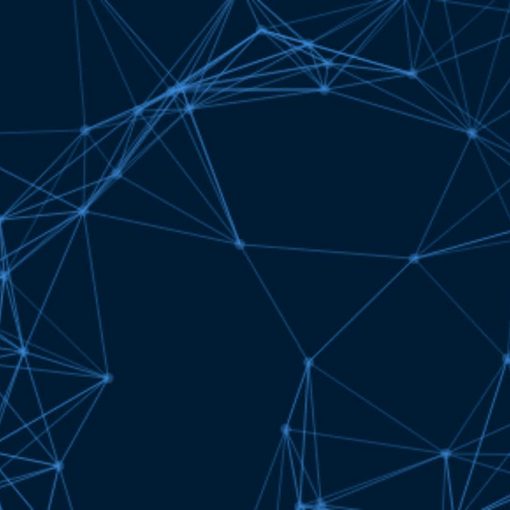I’ve begun to write about free (libre) network services, and the hazards of being a tenant on the web instead of a property owner. I began slowly moving away from Google in 2009, but I’ve accelerated that process since the launch of Google+. I thought I’d begin to share my process of degooglification.
To be clear, I still generally trust and respect Google, and I do believe they’re generally less evil than most, but…
- Despite great support for open source software, they remain a proprietary software company at their core. Google is a friend to open source infrastructure, but not to free (libre) network services. Specifically, it’s the proprietary network services I’m degoogling from.
- The sheer amount of data — email, contacts, documents, calendar, RSS feeds, social graph, phone calls, photos, GPS location, nevermind web searches… — aggregated into a one single account with a proprietary service provider is an obviously bad idea. Even if Google never intends to do anything bad with it, they can make mistakes. Even if Google never does anything bad itself, it’s a single vector for attack from an outsider. And it’s not your account.
Email is one of the easiest services from which to degooglify. It’s also a good example of a multi-step transition.
Changing the front-end
The first thing I did was to stop using the Gmail web interface. I configured my Gmail account in Thunderbird, which I was already using for other email accounts. Google’s commitment to data portability often makes it easy to switch your front-end software before switching the back-end, which can make a transition much smoother. Rather than cutting over cold turkey, you can ease into a new interface. My Gmail account is still active, but it rarely sees any important email anymore. I’ve transitioned 99% of my email to other accounts on domains I control (like this one).
Changing the Backend
Gradually, I started using my blaise.ca email addresses instead of my Gmail account, until eventually I wasn’t getting much email through Gmail anymore. With my Gmail account configured in Thunderbird, it was easy to archive the contents on my computer. You can access Gmail labels as IMAP folders and just copy email from one account to another, and Thunderbird will even offer to synchronize a local copy of your Gmail account. I never used Gmail contacts, but an export and import to Thunderbird would get your data out (more on contacts another time). Lastly, I’m still monitoring my Gmail account via Thunderbird, but I could set an auto-reply and/or forwarder if I really wanted to force that last 1% over. I will probably do that eventually.
Other Considerations
There are a few other perks of a Gmail account that are pretty easy to get from libre alternatives:
- Hosted: Not everyone is going to run their own mail server, or have a friend or family member who does. But there are hosted, libre services, like riseup.net
- Storage space: in 2004, 1 GB of email was a huge game changer. Today, it’s not very hard to get that kind of storage space on a server for cheap.
- Chat: Google uses the open standard XMPP for its chat service. I run my own XMPP server, and there are public Jabber services like jabber.org. I’ve simply added my Gmail contacts to my blaise@blaise.ca XMPP account. More on chat another time.
- Conversations: The Conversations add-on provides Gmail-style conversations inside Thunderbird.
- Spam filtering: Gmail has a good track record on spam filtering, but SpamAssassin, ClamAV and a greylisting policy can produce great results on your own server nowadays. I don’t get any more spam to my blaise.ca inbox than I do to my Gmail inbox.
- Webmail: I love Thunderbird, but not everyone wants to use a desktop client, and you’re not always on your own computer. Roundcube is already a great free software webmail client, and it hasn’t even hit 1.0 yet. Many hosting providers already offer Roundcube to their customers.
- Mobile: With IMAP, my email is easily accessible from and synchronized between Thunderbird, Roundcube, and my mobile computer’s IMAP client.
Email is probably the easiest thing to degooglify. It can be a smooth, gradual transition, and there are lots of good alternatives, as well as benefits from leaving Gmail. Over the next while, I’ll share my ongoing efforts to degooglify other aspects of my online life.



8 thoughts on “Degooglifying (Part I): Email”
I actually switched from GMail to Riseup, just for the sake of getting less dependent from one-percenter sites. Deleting your unneeded mail and backing up the rest via Thunderbird is enough for making those 96 MB not collapse. However, I still don’t know why don’t they implement Roundcube. Perhaps it’s not secure enough for them?
Could you install Roundcube on a server you manage and log into your riseup.net account from there via IMAP? Wouldn’t offer much in the way of archiving mail though, but could be a convenient way to access your inbox when away from Thunderbird. *shrugs*
I’ve never actually used Riseup myself, just heard good things.
I’ve kind of gone the other direction and am replacing all other Google stuff except my hosted Google Apps email (which I back up with offlineimap & Thunderbird) and calendars. The nice thing about the Google Apps setup is I can turn off all the Google apps I don’t want my ‘users’ to access with their non-gmail Google accounts, so there’s no tracking across services.
Been testing DuckDuckGo for non-tracking search and am liking it so far.
Google Apps email for your own domain? That’d be a step up from straight Gmail since you’ve already got a portable email address, makes sense.
I’ve used DuckDuckGo a little bit. I’m more interested in these new distributed search engines, like Seeks and YaCy, which are not only non-tracking but also not proprietary. But, unlike DuckDuckGo, I haven’t found them (well, I’ve only tried YaCy) super usable yet in terms of stability or results.
Hey all,
I am moving from gmail to riseup,
and would like to move all my inbox content(from the past 9 years or so)
to riseup. Is this possible? Can they store that?
and if so how is it done?
I am not really tech savvy enough in this regard,
so I don’t know anything about servers or these things.
Any advide or reccomendations would be greatly appreciated.
Thanks,
Niall.
What I did was the following:
– Using an e-mail program (like Thunderbird) I logged into GMail.
– I made a local folder in Thunderbird to store old GMail e-mails in my computer.
– Then I transferred all the old mail from GMail to that folder in my computer.
– Then I deleted the GMail account in Thunderbird, making sure that the old e-mails are in my local folder.
– Then I logged into Riseup Mail. I could have exported my mail back into Riseup, but it offers little space by default (it’s a NGO with little funding after all), so I kept it in my computer. Also, whenever Riseup was about to run out of space, I transferred old mails back into the aforementioned folder.
Hopefully this guide works for you too!